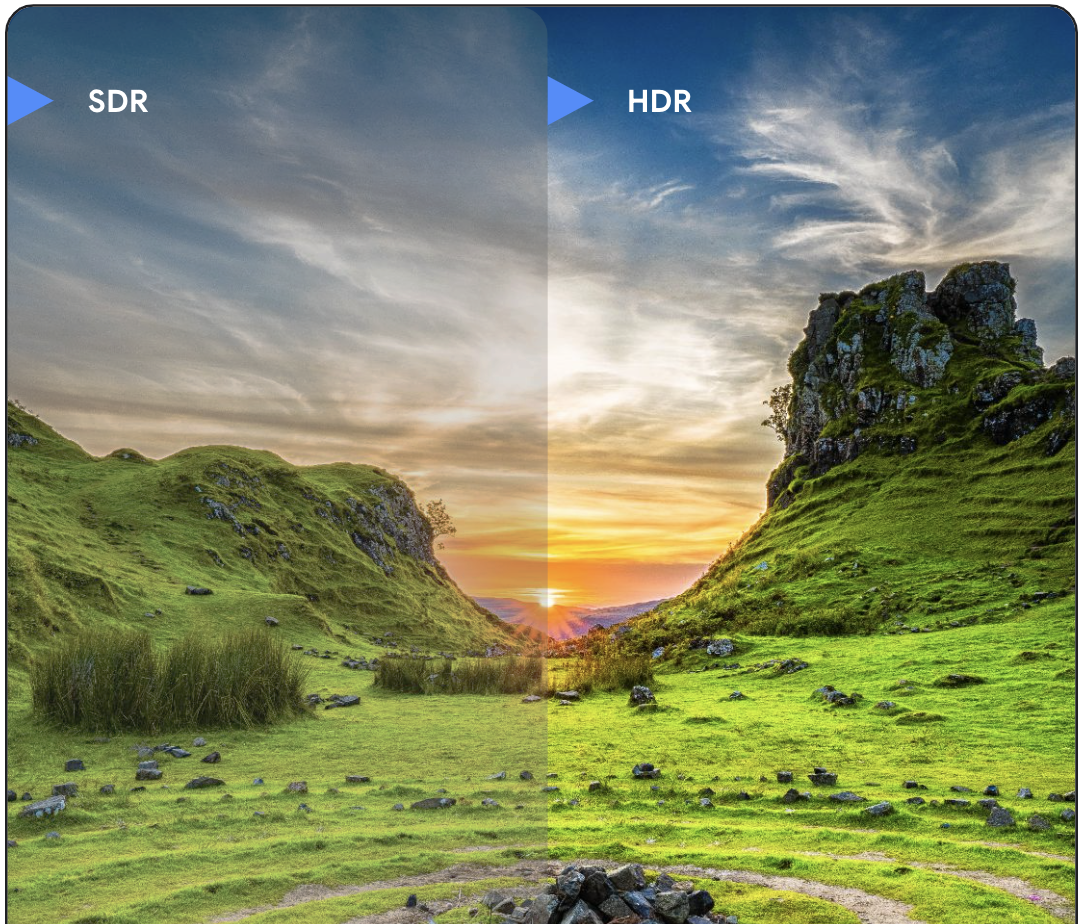Формат изображения Ultra HDR позволяет изображениям хранить больше информации об интенсивности света, что приводит к более детальным бликам и теням, а также к более насыщенным цветам. В этом разделе представлена информация, которая поможет вашим приложениям правильно поддерживать изображения Ultra HDR.

- Устройства могут отображать изображения Ultra HDR с полной яркостью, если они работают под управлением Android 14 или более поздней версии и имеют экраны, поддерживающие HDR. На других устройствах изображения по-прежнему отображаются, но в стандартном динамическом диапазоне.
- Устройства могут захватывать изображения Ultra HDR, если они работают под управлением Android 14 или более поздней версии и имеют камеры, поддерживающие HDR.
- Все устройства Android могут обмениваться изображениями Ultra HDR, даже если устройство не поддерживает Ultra HDR. Например, если у пользователя есть телефон под управлением Android 13, и ему отправлено изображение Ultra HDR в чат, и он пересылает это изображение другу с устройством под управлением Android 14, которое поддерживает HDR, этот друг может просмотреть изображение в своем полная интенсивность.
Документация
В этом разделе содержится следующая документация по поддержке изображений Ultra HDR:
- Отображение изображений Ultra HDR : Как правильно отображать изображения Ultra HDR, когда ваше приложение работает на устройстве, которое их поддерживает.
- Редактировать изображения Ultra HDR : Как редактировать изображения Ultra HDR, сохраняя их полную интенсивность
Дополнительные ресурсы
Чтобы узнать больше об изображениях Ultra HDR, посетите следующие дополнительные ресурсы:
Документация
Видео
Примеры кода
Захватывать
Отображать
- Ultra HDR: рендеринг по умолчанию
- Визуализация карты усиления
- Сжатие изображения Ultra HDR
- Отображение изображения Ultra HDR в Compose
- Использование библиотек загрузки изображений с изображениями Ultra HDR

